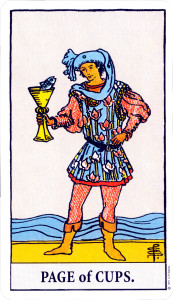Back in 1997 I went to my first International Tarot Conference and I met someone who had a profound impact on my understanding of Tarot. His name was James Wanless, the creator of Voyager Tarot. He was one of the guest speakers at the conference and his approach to Tarot transformed the way I did my readings.
James had a unique method of using Tarot. To him, Tarot was not fatalistic; he stressed again and again that he used Tarot in a pro-active manner. It was from James that I learned about the use of ‘action cards’.
In a Tarot reading you choose an action card when you want to discover how to overcome a situation. Or, if you don’t like an outcome, you choose an action card to tell you what you can do to change your future. This concept opened my mind to a whole new way of looking at Tarot, and it has been the basis of every reading I have done since then. And now I would like to share with you an extension of this unique approach.
The next step is ‘verification’ cards. When you do a reading and you see an outcome, or an obstacle you want to change, you can choose an action card and work out an interpretation for it, but how do you know if your interpretation is correct? How do you know if the action you choose to undertake will give the result you expected? The answer is to choose a verification card.
 After giving your interpretation for the action card, ask yourself the following question: If I take this action, what will be the result? Choose a card at random from the remaining ones in the deck. If you have interpreted the action card correctly, you will see a positive outcome in the verification card. It will indicate a successful conclusion to the situation.
After giving your interpretation for the action card, ask yourself the following question: If I take this action, what will be the result? Choose a card at random from the remaining ones in the deck. If you have interpreted the action card correctly, you will see a positive outcome in the verification card. It will indicate a successful conclusion to the situation.
In a recent reading, Mary was having difficulties with her sister-in-law. During the reading it had become clear that the obstacle hindering the relationship was the sister-in-law’s need to be overly protective of the rest of the family. She was always interfering, even though in her mind she believed she was being helpful.
An action card was chosen to work out how to deal with the sister-in-law. The card was the Page of Cups. It suggested Mary offer a nurturing attitude — and when this idea was brought up, Mary had the realisation that the sister-in-law was acting as a continual care-giver because of her own need for love and acceptance.
To test whether this interpretation was correct, a verification card was drawn. We asked the following question: “If Mary is more loving and nurturing to her sister-in-law, what will be the result?” The card drawn from the rest of the pack was the Ten of Cups. Did we get it right? Definitely. The situation had been verified!
